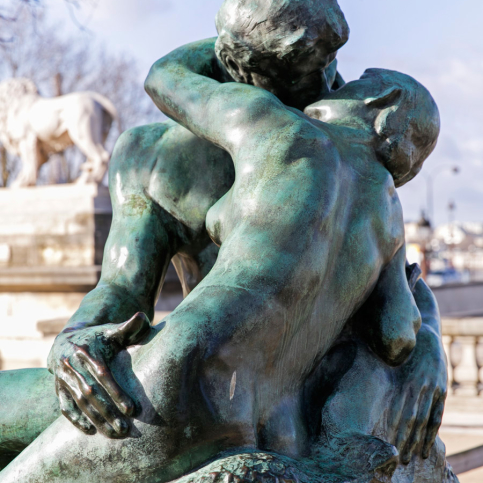Dante told the tale first: of Francesca, who falls in love with her husband’s beautiful younger brother, Paolo, and is killed alongside him when her husband discovers the enraptured couple exchanging a kiss. In The Divine Comedy, Dante condemns the lovers to wander forever in the second circle of hell. Rodin, meanwhile, chose to immortalise the pair in one of his best-known sculptures, The Kiss, and depicts them in the erotically charged moment when their lips are about to meet for the first time.












“A hand which rests on the shoulder or the leg of another no longer belongs entirely to the body from where it came: that hand and the object it touches or grasps together become something new and something more, without a name and belonging to no one; (…) as if at every point of contact waves sweep over the body, shivers of beauty, foreboding and strength. It is as if we see the joy of that kiss throughout the body: it is like a sun that rises and pours its light into every corner of the world.”
Rainer Maria Rilke, Auguste Rodin